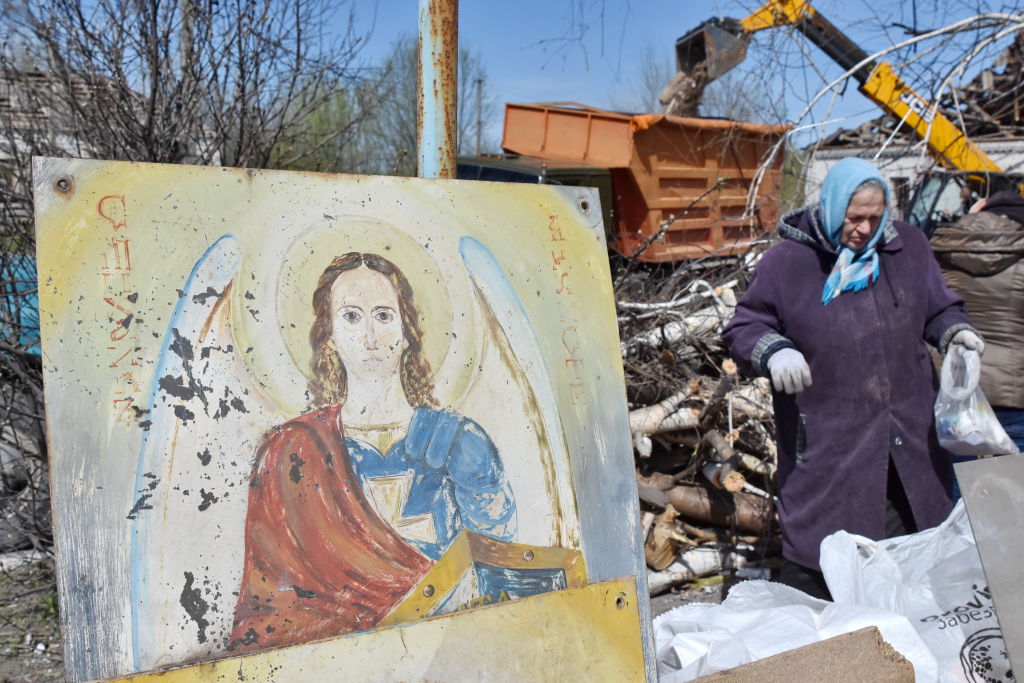No Easter Truce in Ukraine
If the two sides can’t agree on a ceasefire for the holiest day in the Orthodox calendar, negotiations aren’t coming soon.

Orthodox Christians around the world celebrated Easter this past Sunday, May 5—Cinco de Pascha, as someone in the TAC office called it—but there was no holiday on the front lines of the war in Ukraine. Once again, as in previous years, no agreement for an Easter ceasefire was reached and both sides blamed the other for the failure.
The reason the ceasefire fell through last year is that the Western side felt that Ukraine had the initiative on the battlefield and did not want to give the Russians any breathing room. “The Kremlin has selectively called for ceasefires around religious holidays to influence the situation on the frontlines,” the neoconservative Institute for the Study of War warned in April 2023. “The Kremlin may call for an Easter ceasefire because such a pause would disproportionately benefit Russian troops and allow them to secure their gains in urban Bakhmut and to prepare defenses against Ukraine’s spring 2023 counteroffensive.”
Now the situation is reversed, with Russia making battlefield gains and Ukraine needing a pause to regroup its defenses. Neither side bothered even to propose a truce this time. A spokesman for the Russian Orthodox Church said on April 27 that discussions of an Easter ceasefire would be “pointless” because Ukraine had broken such agreements in the past.
Ukraine and Russia both celebrate Holy Week on the same date, at least for now. Last year, the breakaway Orthodox Church of Ukraine—which has been using coercion and violence to replace the canonical Ukrainian Orthodox Church as the country’s main Christian denomination—announced it was switching to a more Western calendar because “the Julian calendar is perceived as connected with Russian church culture.” The OCU now celebrates Christmas on December 25 along with its American and European allies, not on January 7 as before along with the rest of the Slavic world. (The date of Pascha is unchanged for now.)
Volodymyr Zelensky used the occasion of his Easter statement this year to declare that God is on his side. “We believe God has a chevron with the Ukrainian flag on his shoulder,” he said in a video statement. Vladimir Putin also released a short Easter message, which did not mention the war at all.
The silver lining to brother wars, which are otherwise the most tragic of conflicts, is that the two sides’ common background allows for interruptions in the fighting on shared days of celebration, like the famous Christmas truce on the Western front in the First World War. Now the Ukrainians and Russians don’t even have a common Christmas on which to hold a truce.
Subscribe Today
Get daily emails in your inbox
If the two sides of this war can’t find enough common ground to agree to a ceasefire for the holiest day in the Orthodox calendar, celebrating Christ’s resurrection, then negotiations for a more durable end to the war must be far off indeed.
National Security Adviser Jake Sullivan said over the weekend that Ukraine is currently planning a new offensive for spring 2025. Such an initiative, if it comes to pass, will depend on two things: Ukraine holding the line between now and then, and more money and arms from the United States. The latest round of funding, which passed the House last month, will at most allow Ukraine to maintain the status quo. A new offensive would require another package.
Both of those prerequisites seem far from guaranteed. We could easily see a decisive Russian military victory this summer or a Donald Trump electoral victory in November—or both. If so, the hot phase of this war may be finished by the time Pascha comes around next year. If not, then let us pray the two sides will be more willing to pause the fighting for Holy Week a year hence.